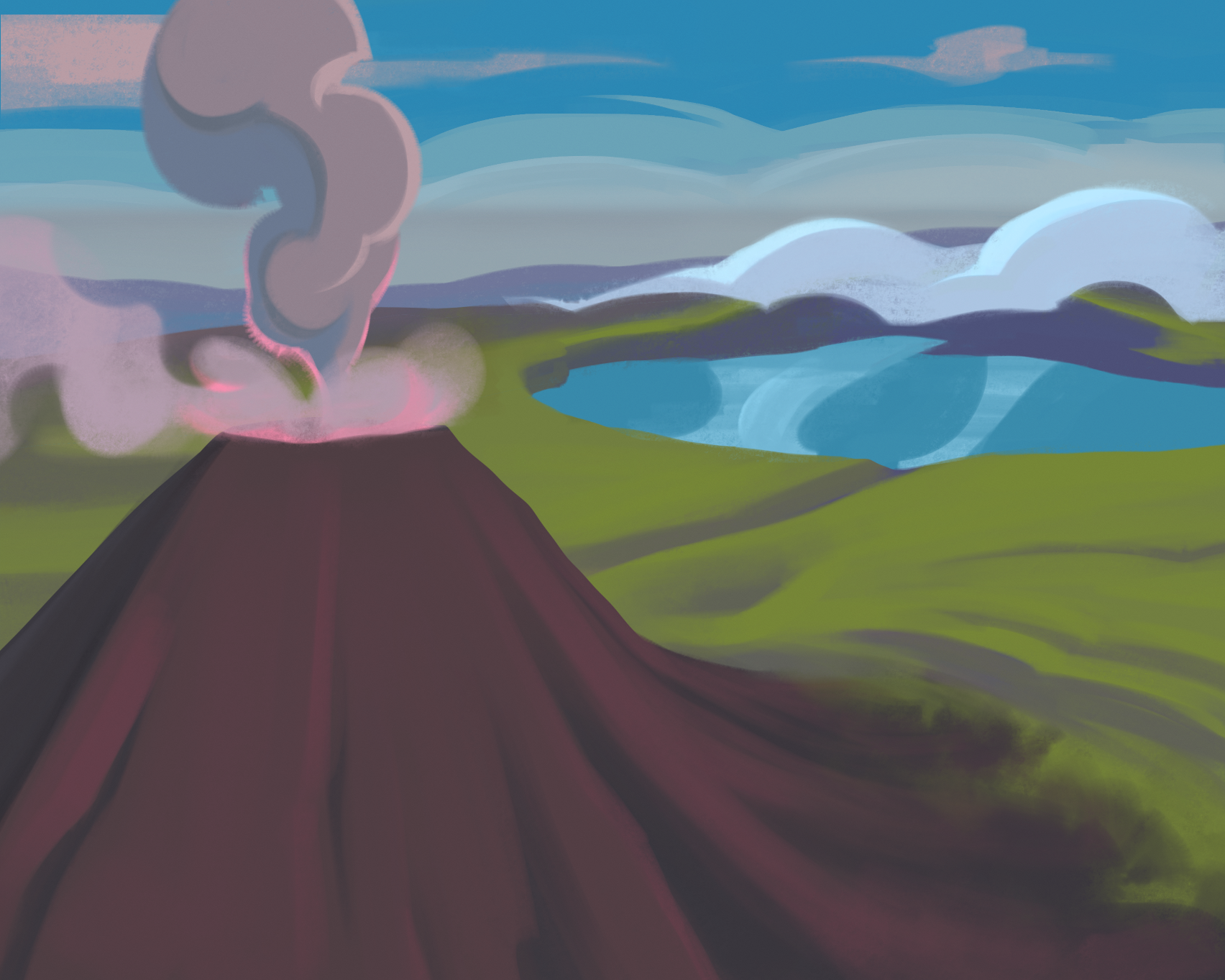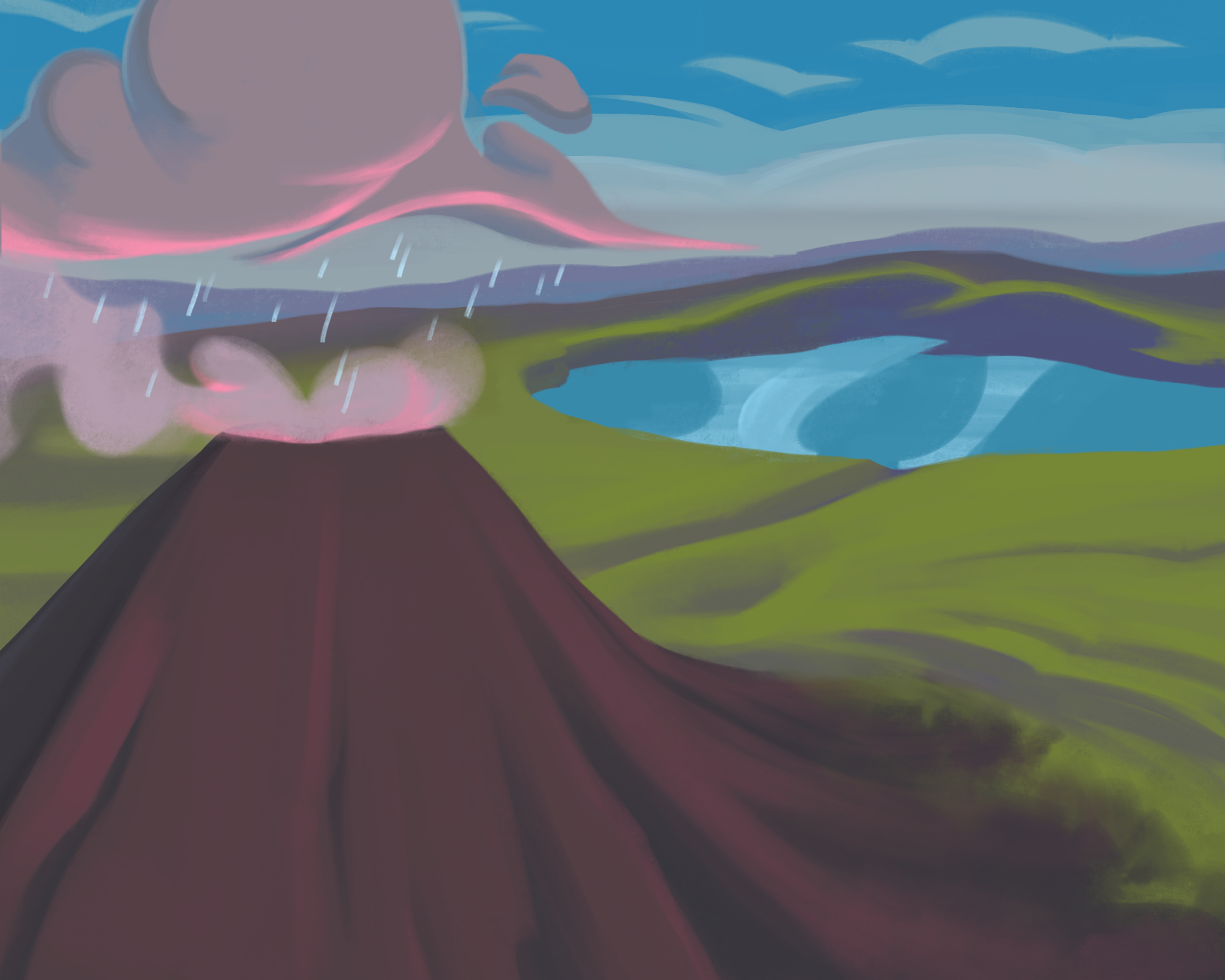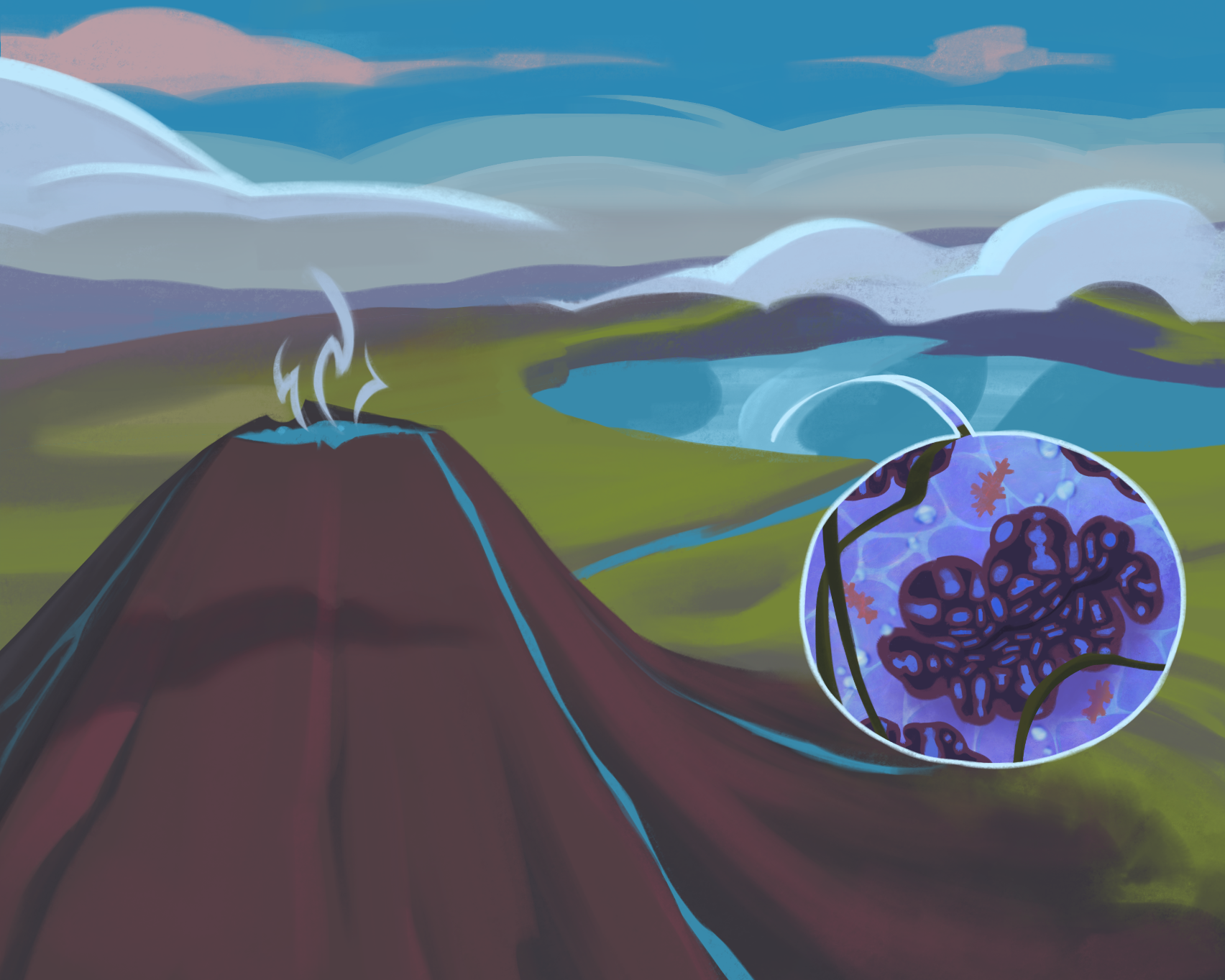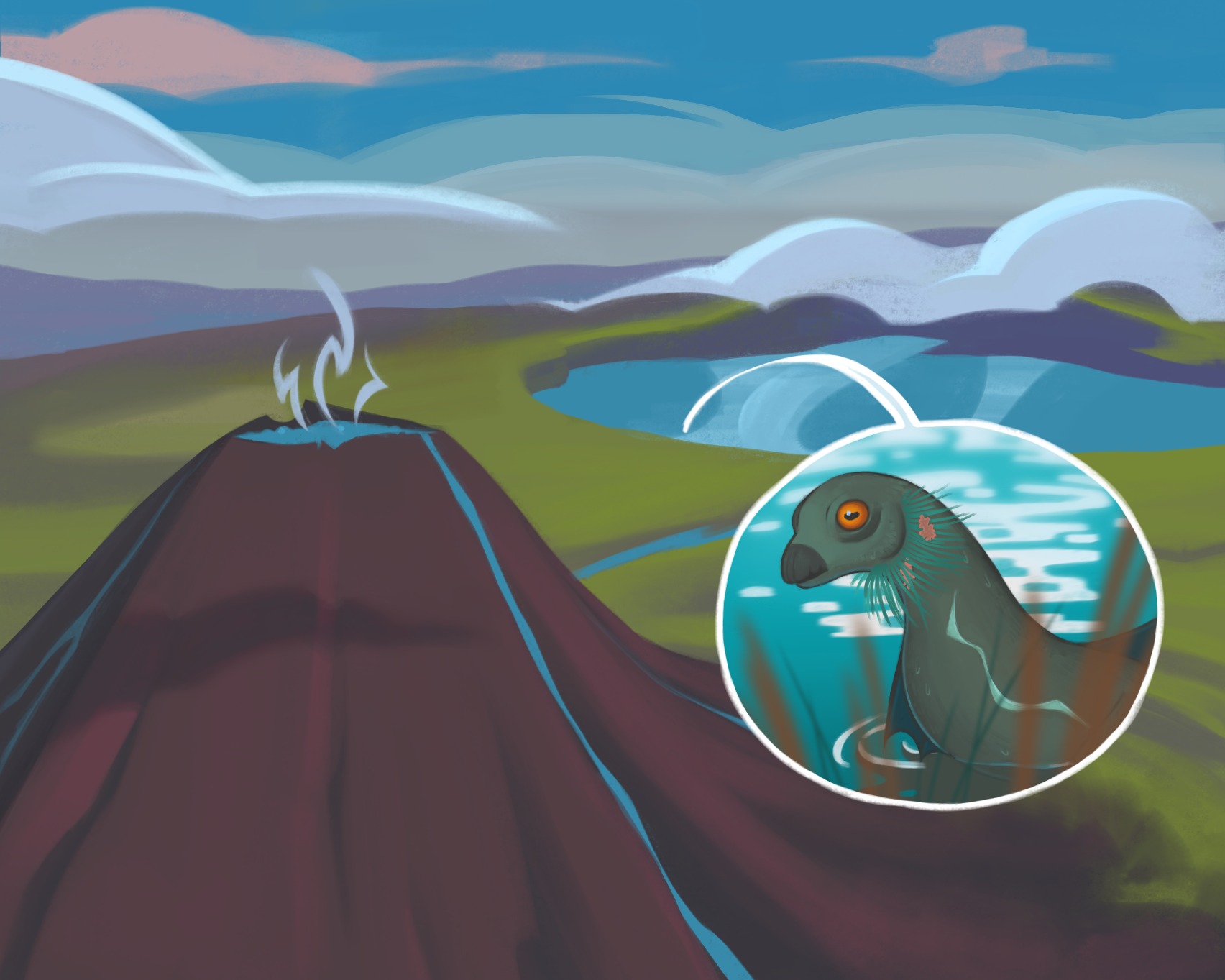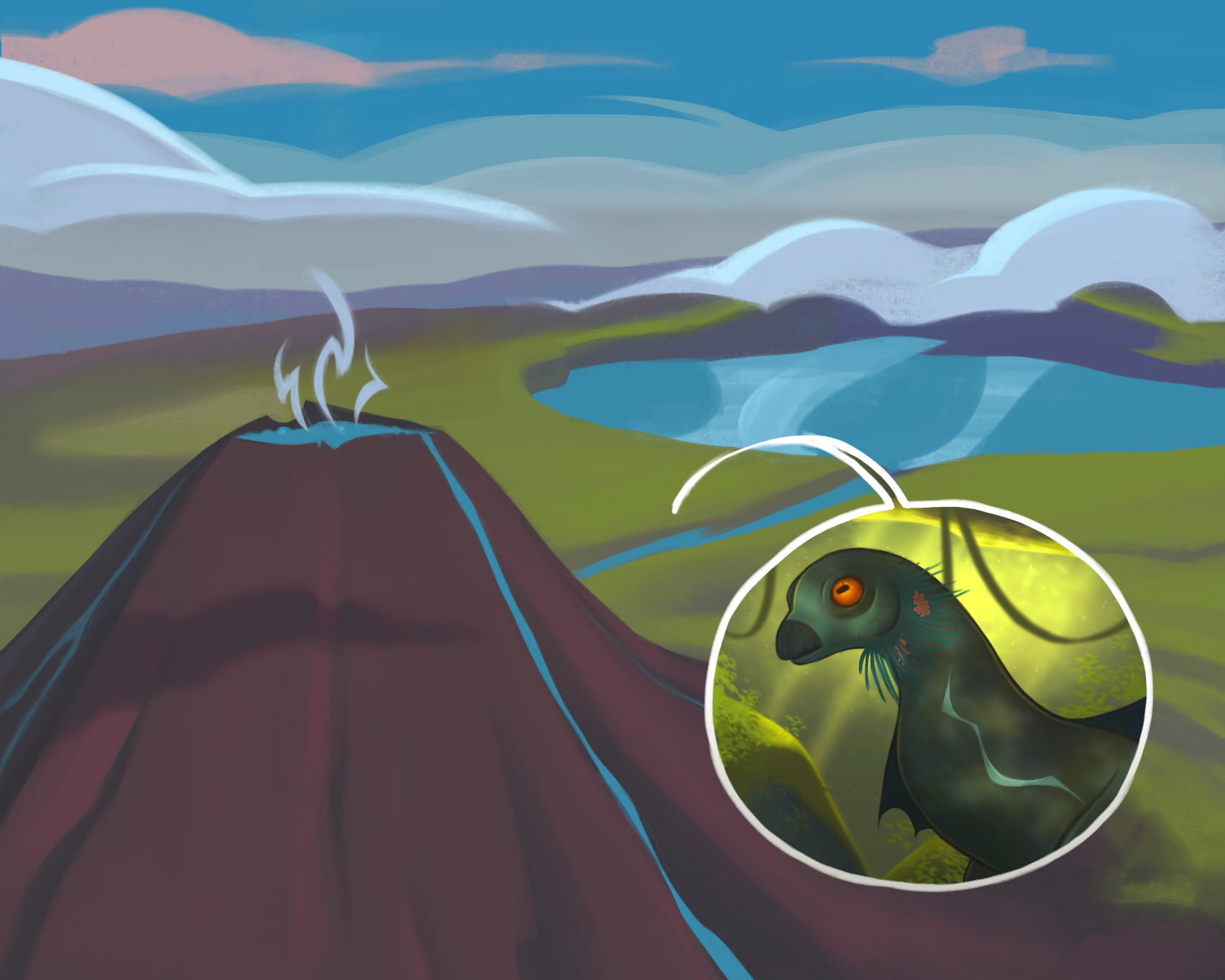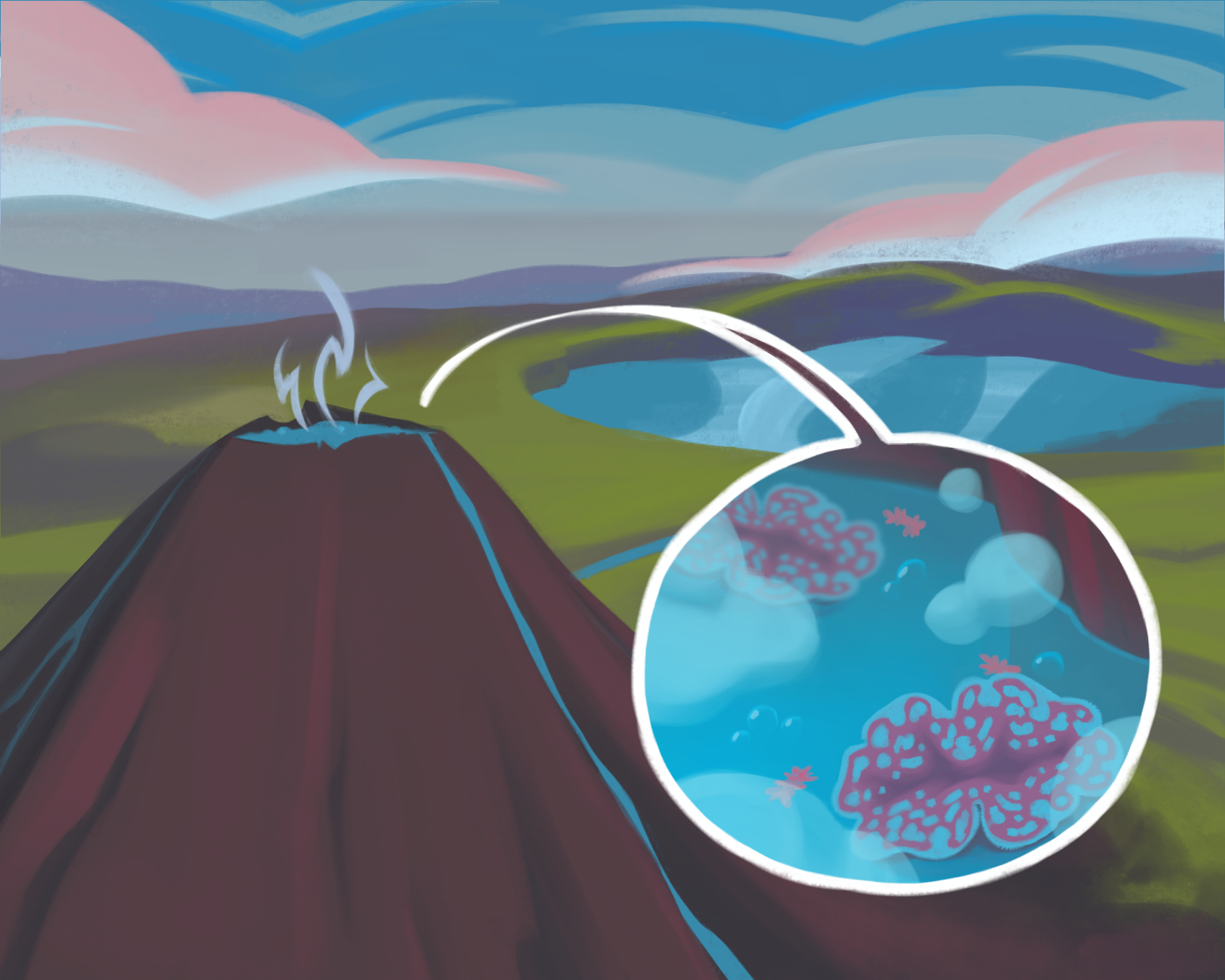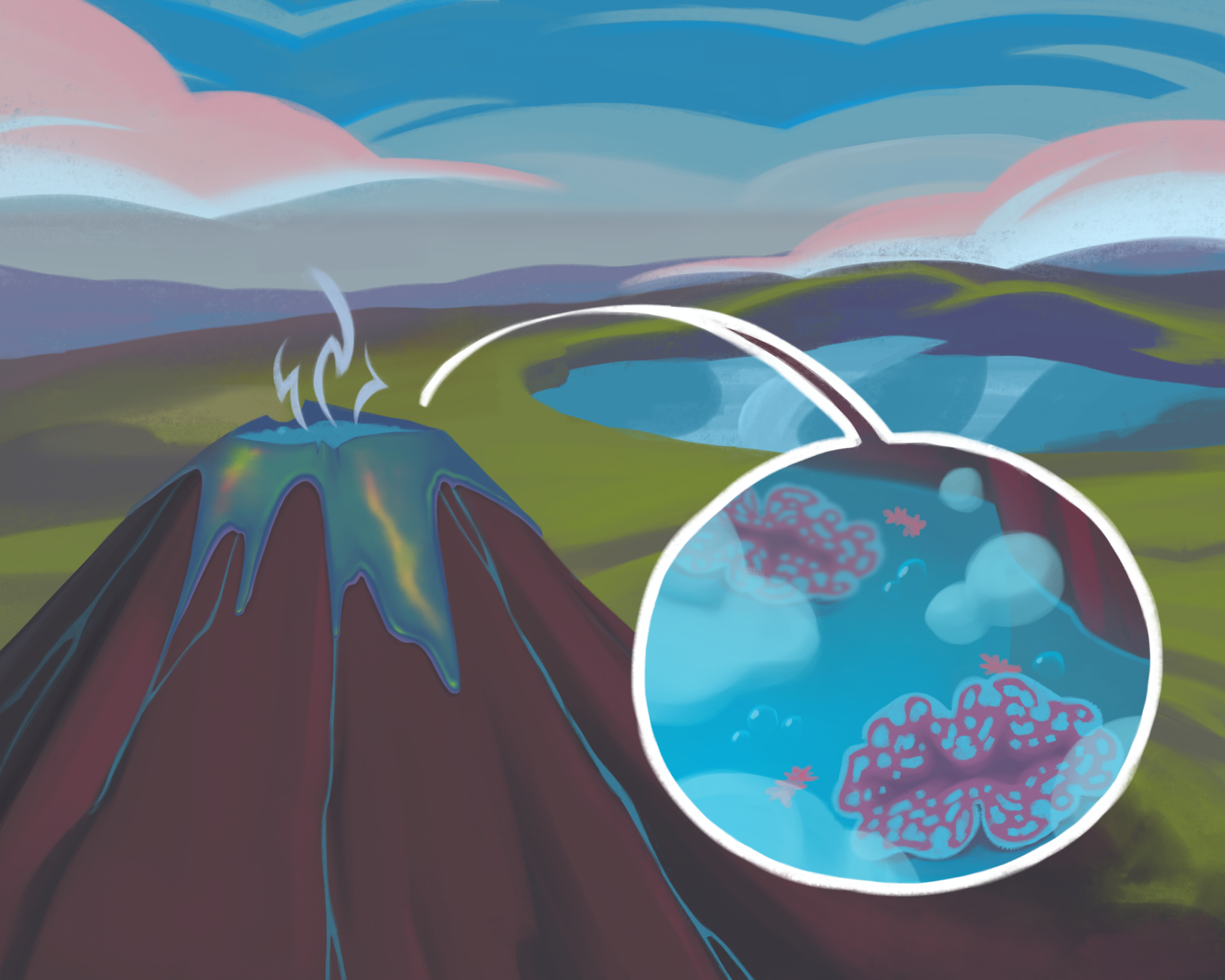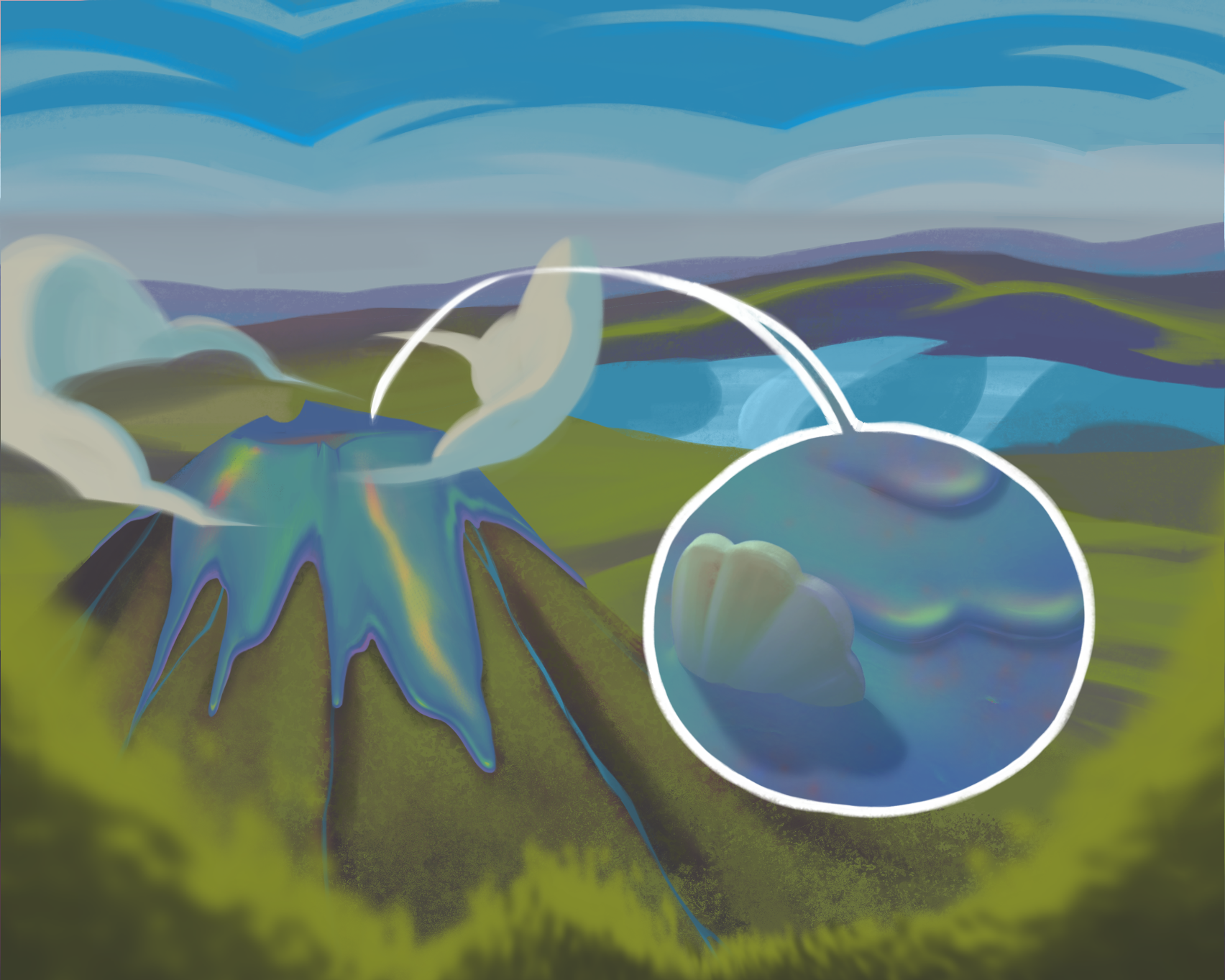Be dazzled by the splendour of the Nacrefalls.
A hike up the side of the extinct volcanoes of the Hot Rains will take a traveller through hours of exotic jungle with a rich ecosystem. This is a marvellous opportunity for half a day of wildlife-spotting, with a break at lunch-time to rest and eat beside one of the Hot Rains' countless rivers.
A few species of kasulam live in the rainforest, including neolithic tribes who consider the summit a sacred site and have given us their blessing to visit. Young tannam-fago feed on fruit and insects in this area until they reach adulthood, when they visit the larger rivers or coast to breed.
The real show-stopper begins around two-thirds of the way up, when the party encounters this hike's most unique treasure: the first tendrils of the nacrefalls. Solid rivers of blue-green pearl bejewel the ground, thanks to the giant molluscs in the volcano-side rivers and the geothermally-heated waters at its peak. The hillside and nacre is rich with basking khoricru, including a few blue-feathered and patterned species that will be sure to please any wildlife-spotter. Bristle-tailed jawagora are moderately common at the summit, and visitors are welcome to watch their antics as they dip into and out of the boiling waters!
Key Information | |
|
Artist:
|
LuckyMrUnlucky (header image and all slideshow items)
|
The History of the Nacrefalls
At a point in Kaleida's distant history, the volcanoes of the Hot Rains region reached a high enough altitude to create their own weather system. This generated rain. The rain pooled in the craters of the tallest volcanoes and was heated by the magma beneath these new lakes. When the pools were first discovered it was believed that the rain itself must have been hot when it fell (hence the name "Hot Rains"), but in truth the rain of this region is within a normal temperature range. The name stuck regardless.
Enough rain occurred to cause the lakes to overflow, which created rivers that ran to the sea. The sea was populated by molluscs, which bred there and released larvae to float freely in the waters.
One of the local animal species, the bristletail jawagora, frequently swam and hunted for food there. Over a period of many years the bristletails often got mollusc larvae in their feathers while hunting. Some of these individuals travelled inland to hunt in the rivers and introduced the larvae there. This cycle of introduction continued, and the molluscs steadily became established further upstream.
The molluscs adapted to the increasingly high temperatures and began to experience an increase in the amount of grit and other particles in the water. They grew bigger and produced increasing quantities of nacre to protect themselves from the grit. The further up the molluscs travelled, the bigger they grew, and the more nacre they produced. The bristletail was also well-adapted to the volcanic lake environment, so they introduced the molluscs all the way up to the lakes. By the time they became established at the crater, the molluscs habitually produced considerable quantities of nacre.
In the current day, the summit of the volcanoes are crowned with a glimmering 'waterfall' of solid, blue-green nacre. The molluscs evolved to spend much of their time open to release nacre, and when they died, became half-buried in the nacre of their neighbours, leaving a graveyard of half-shells poking out of the falls.
